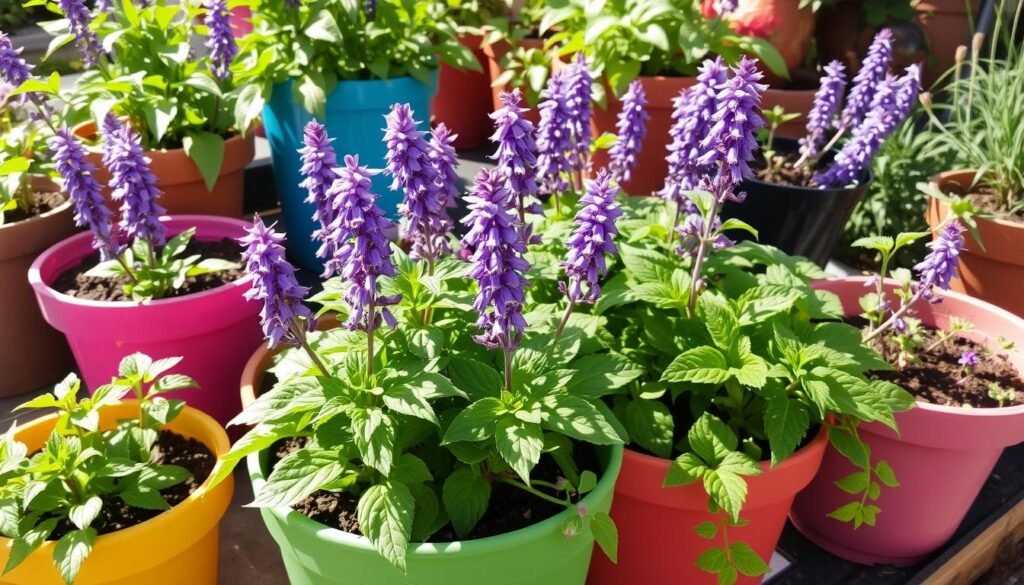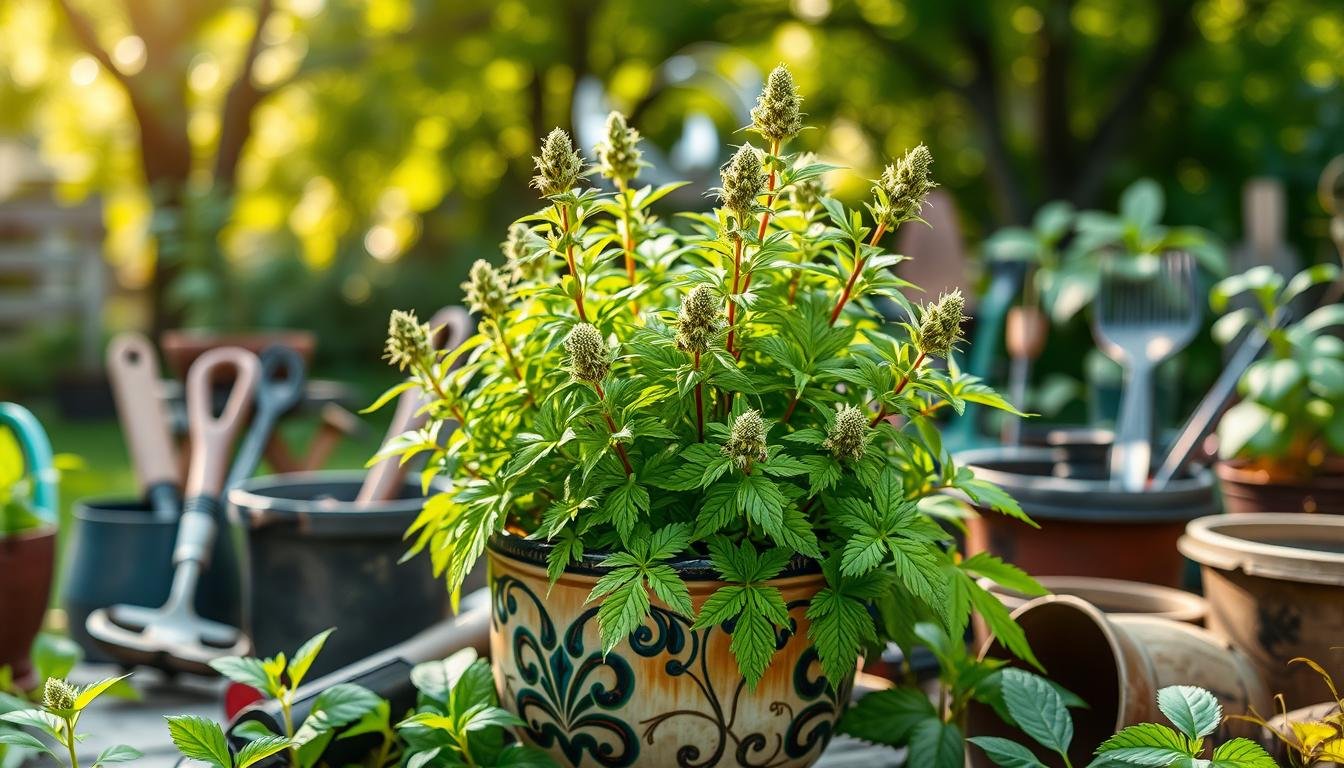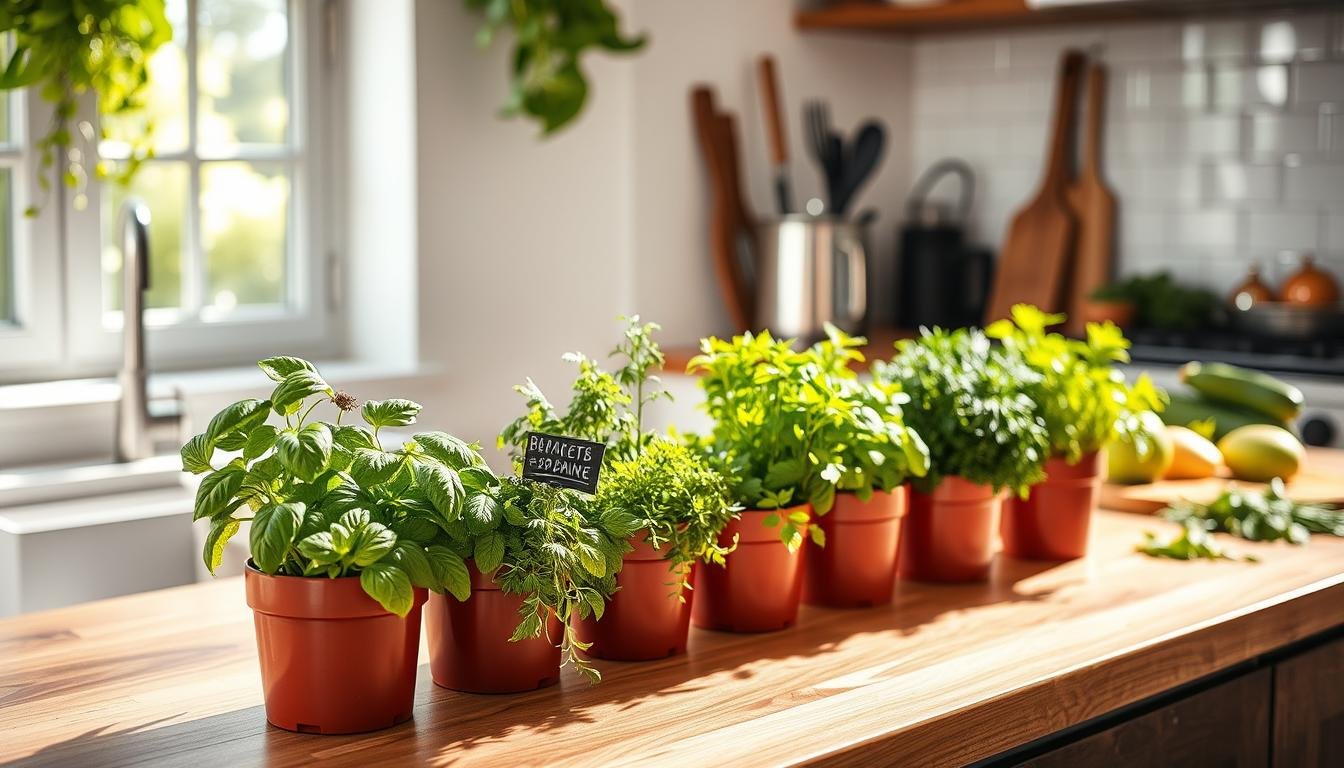Did you know over 70% of cats react to catnip? This herb is not only fun for cats but is also loved by gardeners. Growing catnip in containers has many perks, like its aromatic scent and attractant leaves. In this guide, we’ll dive into how to successfully grow catnip in containers. We’ll offer tips to help your catnip flourish, making your cats happy.
Key Takeaways
- Catnip container gardening is accessible for both novice and experienced gardeners.
- Growing catnip in containers helps control the growing environment.
- Container gardening is ideal for those with limited space.
- Indoor catnip cultivation can enhance your home environment.
- Offering catnip to your pets can enrich their playtime and health.
Why Grow Catnip in Containers?
Growing catnip in containers comes with multiple benefits for plant lovers and pet owners. It lets you manage soil quality and drainage better. This makes sure the catnip grows well. Plus, using containers means you can move the plants to get more sunlight or protect them from bad weather.
Benefits of Container Gardening
Container gardening is great for both beginners and experienced gardeners. It has many key benefits:
- Soil Management: You can pick the best soil mix for your catnip.
- Mobility: It’s easy to move pots to capture the best sunlight.
- Space Efficiency: Perfect for tight spaces like small yards or patios, without losing variety.
- Pest Control: Managing pests and diseases is simpler in containers.
Feline-Friendly Aspects
Catnip in containers is especially good for cat owners. This plant is safe and natural, making cats playful. Adding catnip to your gardening routine makes it better for your cats. It brings joy and fun whether placed on a balcony or inside your house.
Choosing the Right Containers
Selecting the ideal containers is crucial for catnip’s success. Catnip flourishes when its specific needs are met. In this section, we’ll discuss important aspects like container size, depth, and the types of materials suitable for your catnip pots and planters.
Size and Depth Considerations
The right container size is key for catnip’s health and growth. Catnip’s root system is not deep, so containers should be at least 12 inches deep. This depth helps roots grow well and get the nutrients they need. Wider containers also provide more room for roots to spread, making plants bushier and stronger.
Material Options for Catnip Pots
The container’s material plays a big role in how well your catnip grows. Some popular options include:
- Terracotta: It’s great for air flow and controlling moisture, which can prevent overwatering. However, it might need watering more often due to its porous nature.
- Plastic: These containers are light and usually cheaper. They hold moisture well but might not let enough air through like terracotta does.
- Ceramic: They come in many styles and are strong, adding a decorative touch. But, they are heavy and might crack easily.
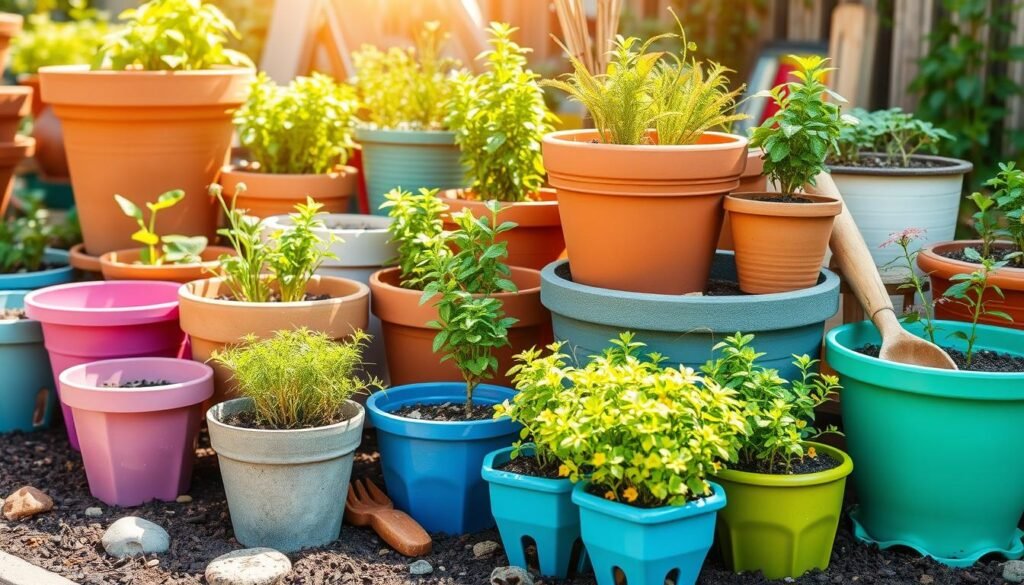
Picking the right size and material for your catnip containers will help your garden flourish. This careful choice supports plant health and adds beauty to your space.
Growing Catnip in Containers: Key Steps to Follow
Growing catnip in containers is fun for you and your cats. First, choose top-quality seeds or healthy seedlings. Pick organic options from trusted brands for the best growth.
Planting at the right time is key. Sow seeds in spring once frost is gone. For seedlings, wait until they are 3 to 4 inches tall before moving them outside.
Choosing the right container is vital. It must have holes to avoid water buildup, causing root rot. Use a soil mix that drains well, suited for herbs.
Catnip needs the right amount of water. Let the soil dry a bit between watering. If the top inch is dry, it’s time to water. Avoid too much water to keep the plant healthy.
After planting, find a sunny spot for your container. A sunny windowsill or a corner of your patio is ideal. With proper care, your catnip will grow strong and vibrant.
Best Soil Mix for Catnip Container Gardening
Creating a top-notch soil mix is crucial for catnip to grow strong and look bright. A good mix not only meets the plant’s needs but also boosts your catnip care. With the right soil elements, your catnip will flourish and be a great part of your garden.
Components of Ideal Soil
An ideal mix should drain well but be rich in organic matter. Consider mixing:
- Potting Soil: Provides nutrients.
- Compost: Improves soil fertility and microbes.
- Perlite or Coarse Sand: Boosts drainage and stops soil from getting hard.
This mix offers the right nutrition and supports healthy roots, key for catnip’s growth.
Soil Drainage Importance
It’s key to understand soil drainage when growing catnip. Bad drainage can trap too much water, leading to root rot. Roots need to be healthy to suck up nutrients and keep the plant thriving. Adding stuff like perlite or coarse sand to your mix helps water flow better. This promotes strong growth for your catnip.
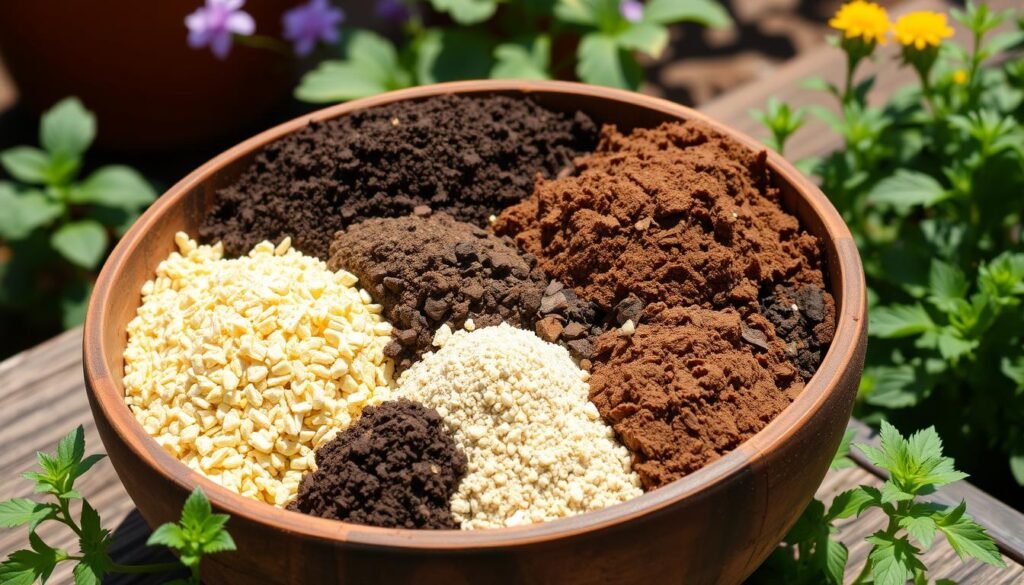
Light Requirements for Catnip Plants
Catnip flourishes in places with a lot of light. It really likes being in the full sun. It needs at least 6 hours of bright light every day. Getting the light right is key for healthy catnip, inside or outside.
Understanding Sunlight Needs
To make your catnip grow well, it needs enough light. Without it, catnip gets weak and thin. Put catnip outside where it can get sun without being blocked. Indoors, a south or west window is great. If you don’t have enough sun, grow lights can help, especially when it’s not the growing season.
Indoor vs. Outdoor Considerations
Choosing between growing catnip inside or outside? The light each gets is a big deal. Outside, catnip gets lots of light, which is best for strong growth. Inside, you might need extra lights. Here’s a look at the differences:
| Area | Light Availability | Growth Potential |
|---|---|---|
| Indoor Cultivation | Limited without supplemental lighting | Moderate but may require adjustments |
| Outdoor Cultivation | Natural and abundant sunlight | High and robust growth potential |
Watering Techniques for Catnip Container Growth
Watering right is crucial for your catnip plants to do well. Knowing how to water catnip properly will make sure they grow strong in their pots. It’s important to have a good watering plan and spot problems like too much or too little water.
Establishing a Watering Schedule
Having a steady watering schedule is key for looking after catnip. The weather, time of year, and type of pot affect how often you water. Usually, checking the soil every few days is a good idea. Here’s how to set up a routine:
- Check the top inch of soil; if it feels dry, it’s time to water.
- Water in the morning to prevent fungal diseases.
- Adjust the frequency based on changing weather conditions.
Avoiding Overwatering Issues
Overwatering can harm your catnip, leading to root rot and other issues. Watching water levels and how the plant looks is essential. Here are ways to prevent overwatering:
- Use containers with drainage holes to allow excess water to escape.
- Look for signs of overwatering, like yellow leaves or a mushy stem.
- Make sure the soil drains well; add perlite or sand if you need to.
| Condition | Watering Needs | Signs of Overwatering |
|---|---|---|
| Hot and Dry | Water every 2-3 days | Yellowing leaves |
| Moderate | Water once a week | Wilting despite wet soil |
| Cool and Humid | Water every 10 days | Mold on soil surface |
With the right watering methods, your catnip will be healthy and flourish. This means you’ll have a plant that looks good and smells great.
Fertilizing Your Catnip Plants
Fertilizing is key for your catnip’s growth and health. Picking the right fertilizer is important. Organic and synthetic fertilizers have different benefits for your plants. We’ll explore how to best fertilize your catnip.
Choosing the Right Fertilizer
Organic fertilizers like compost or fish emulsion are natural. They improve soil and help plants get nutrients. But, synthetic fertilizers work faster, even though they might not be as good long-term. Think about what your catnip needs.
- Type: Organic vs. synthetic
- Nutrient Ratios: N-P-K (Nitrogen-Phosphorus-Potassium) ratios suitable for leafy growth
- Application Method: Granular vs. liquid options
Frequency and Application Methods
It’s important to have a fertilizing schedule. For catnip, here’s a guide:
- Initial Fertilization: Start at planting to help roots grow
- Regular Feeding: Fertilize every 4-6 weeks when it’s growing
- Lighter Fertilization: Use less in winter when growth slows
How you apply fertilizer depends on its type. For liquids, follow the package’s directions and apply to the soil. Sprinkle granular fertilizers around the plant and water it to release the nutrients.
| Fertilizer Type | Benefits | Considerations |
|---|---|---|
| Organic | Enhances soil health | Longer release time |
| Synthetic | Quick nutrient absorption | Potential soil depletion |
Pest and Disease Control for Catnip
Growing catnip can be very rewarding. Yet, it’s vital to watch out for pests and diseases that can harm it. Aphids, spider mites, and whiteflies are common threats. Catching these pests early is key for effective control and keeping your catnip plants healthy. Regular checks can help spot any issues early on.
Common Pests to Watch For
Aphids tend to gather under leaves, sucking sap and causing weird growths. Spider mites create tiny webs and make leaves yellow and fall. Whiteflies, tiny white insects, weaken plants by drinking their juices. Spotting these pests early is essential for keeping your catnip healthy.
Natural Remedies and Prevention
For fighting these pests, natural methods work well and are safe for the environment. Planting catnip near marigolds or garlic can keep pests away. Also, organic pesticides like neem oil or insecticidal soap can safely get rid of pests. Checking your plants regularly and using these methods will help your catnip grow strong without harsh chemicals.
